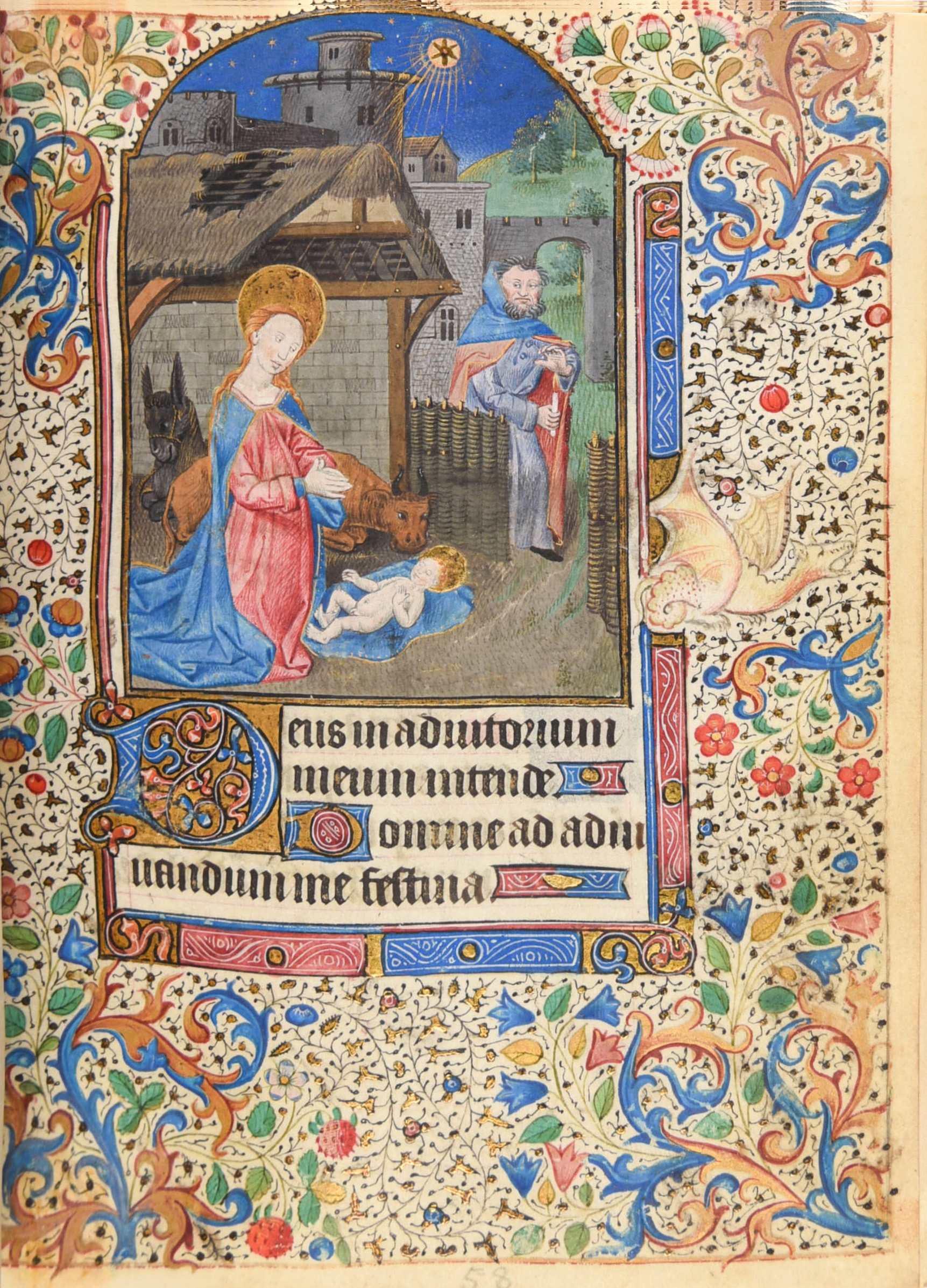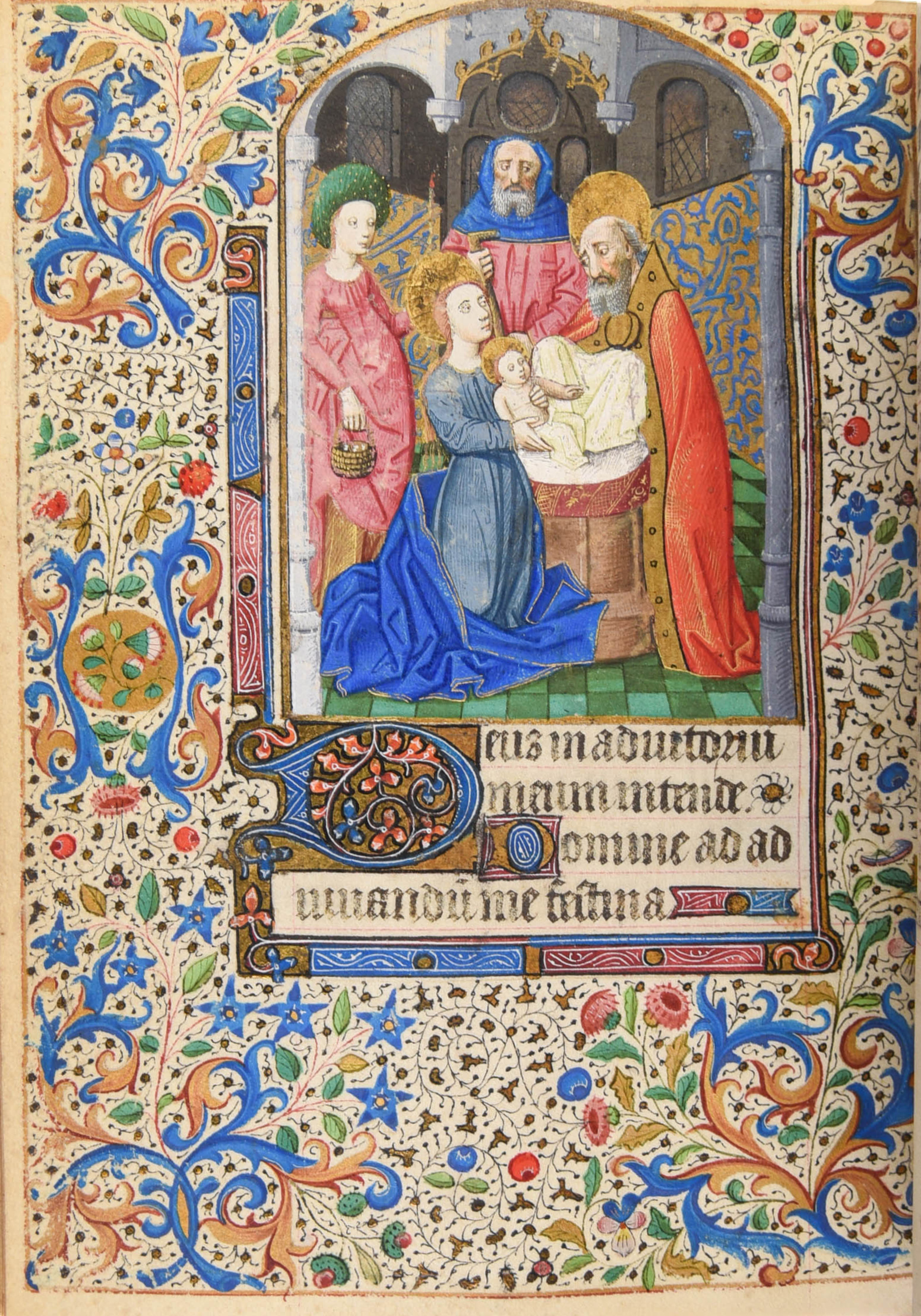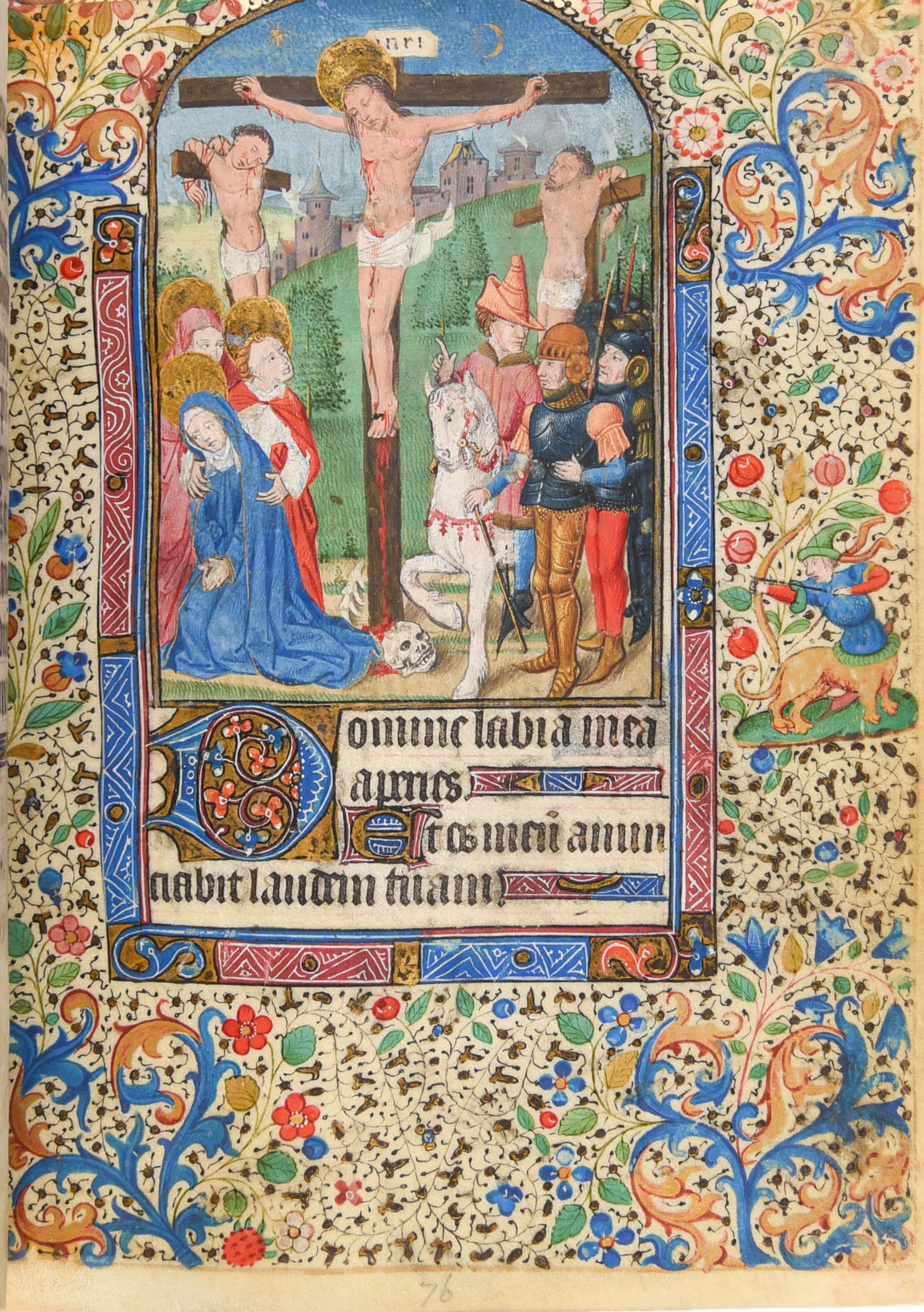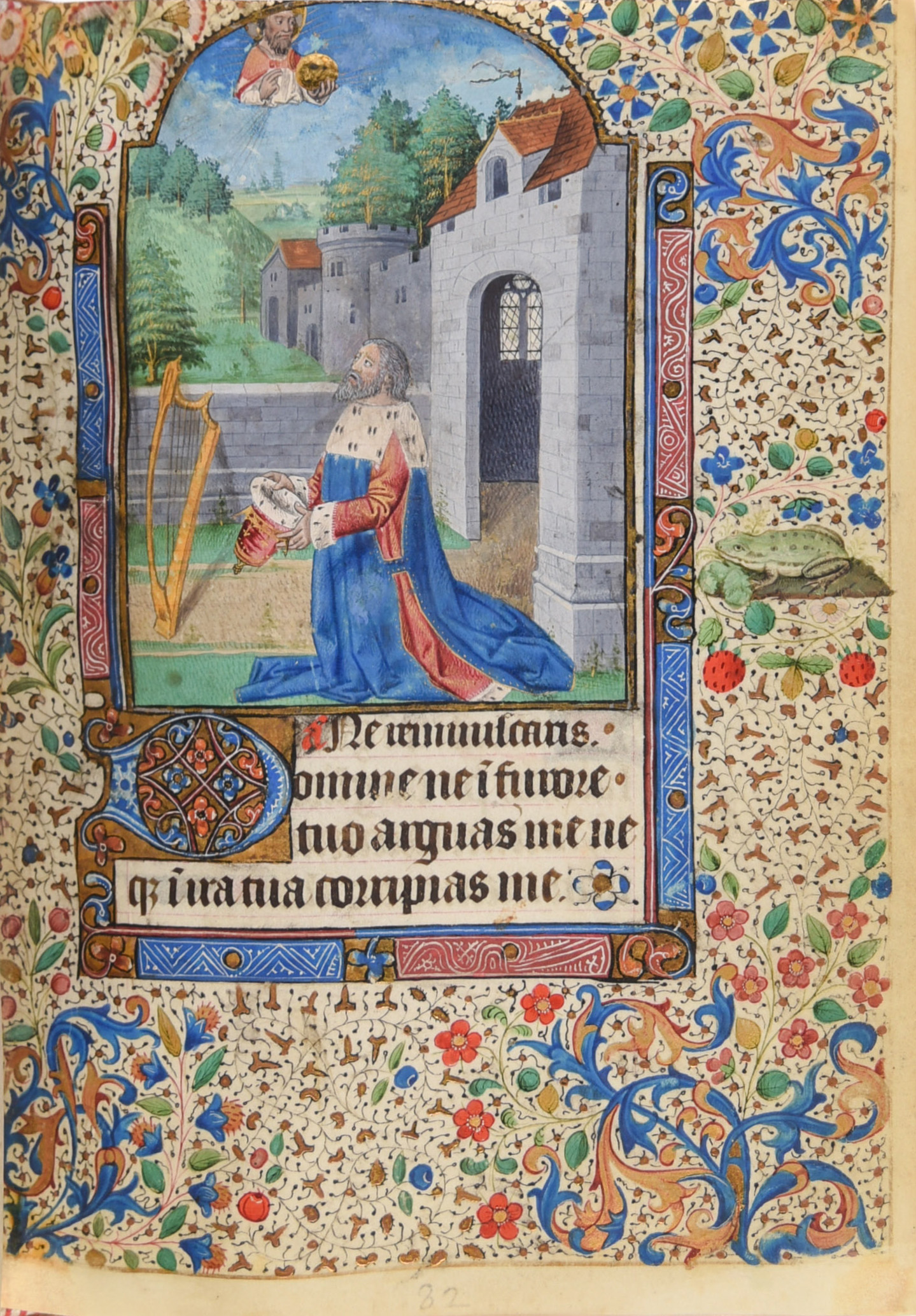|
||
|
||
|
| |||
| 25 APR 2025 | ISSUE 17 | ||
|
| |||
| 3. Collections Spotlight — Illuminated Manuscript: Book of Hours | |
|
The Book of Hours is a type of medieval Western manuscript that served as a personal prayer book, particularly popular during the Middle Ages. Designed for laypeople, it contains prayers to be recited at the canonical hours of the liturgical day. These hours structure the day and night for prayer, and the regular rhythm of this practice led to the name Book of Hours. These manuscripts were owned by elite men and women who recited prayers and psalms as part of their daily devotions. As prized possessions connected to religious life, they were often beautifully illuminated with coloured ink, intricate images, and gilding. Many of them can be considered medieval works of art.
The CUHK Library holds two precious 15th century Book of Hours manuscripts:
Horae Use of Rouen, in Latin and French, illuminated manuscript on vellum, c.1460-70 This book is a prime example of 15th century French book art. Created in 1460s in Rouen, the manuscript features a Calendar in French with major entries in burnished gold, eight large illuminated miniatures, and five large illuminated initials which infilled with coloured foliate designs on highly burnished grounds. The boarders are adorned with sprays of coloured flowers and leaves. The vivid colouring of this nearly 600-year-old book remains remarkably well-preserved.
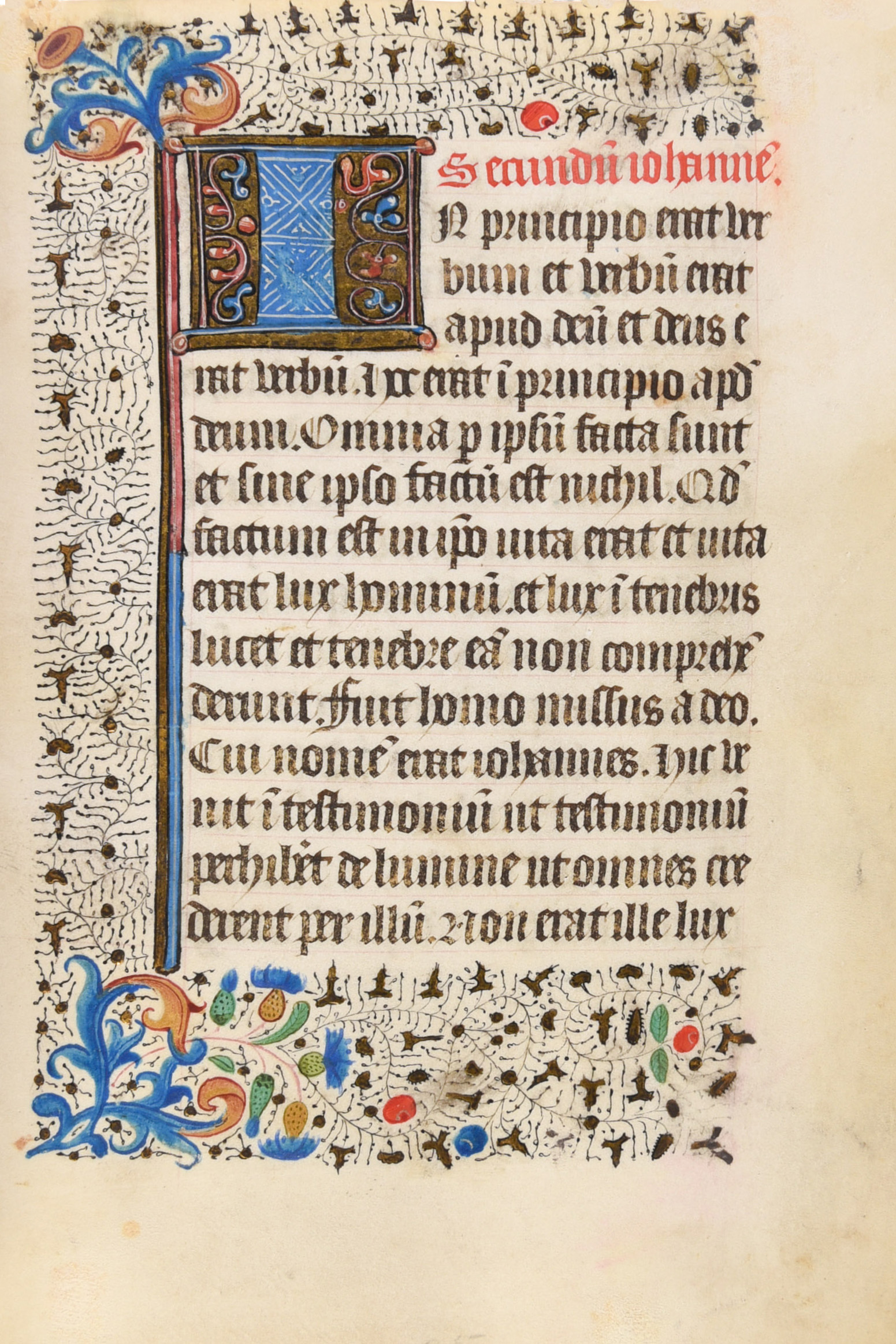 The first leaf of text Heures Gothi
Use of Tournai, illuminated manuscript on vellum, late 15th century
This book exemplifies late medieval Western manuscript culture, compiled according to the Use of Tournai and produced in France during the 15th century. It contains mostly Latin text with some Old French. The Calendar includes the feast days of Saints Piat and Eloy, as well as the date of the translation of Eloy’s relics. The book features one illuminated miniature, numerous rubricated initials (important words written in red or gold ink for emphasis), and many highly decorated boarders.
|
|
| Back to Issue | |
|
Past Issue
| |
|
|
|
|
|
Copyright ©
2025. All Rights Reserved. The Chinese University of Hong Kong Library.




